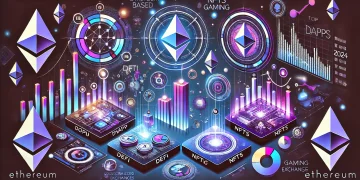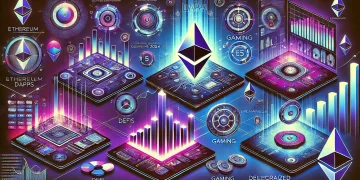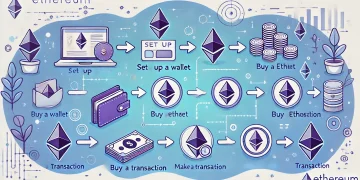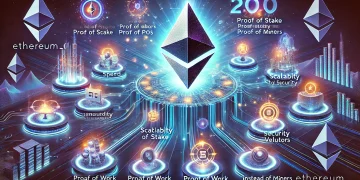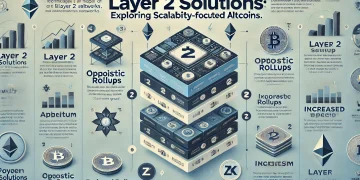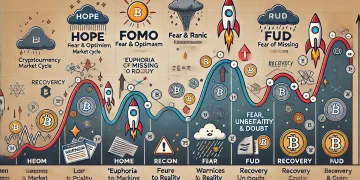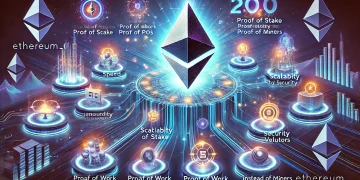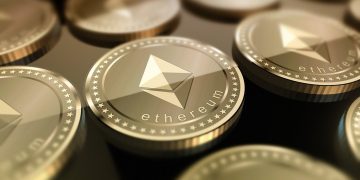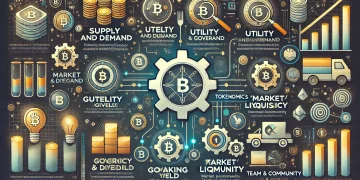In the ever-evolving landscape of cryptocurrency, the Maker Protocol stands out as one of the most innovative and successful decentralized finance (DeFi) projects. At its core are two interconnected tokens: Maker (MKR) and DAI, which together form a sophisticated system for maintaining a stable, decentralized cryptocurrency. This unique approach to creating a stablecoin has revolutionized how we think about digital assets and financial stability in the blockchain space.
Understanding the Maker Protocol
The Maker Protocol represents one of blockchain technology’s most sophisticated and successful implementations of decentralized governance and stability mechanisms. Built on the Ethereum blockchain, this system has created a new paradigm for how decentralized financial systems can operate and maintain stability without traditional banking infrastructure.
At its foundation, the Maker Protocol operates through a complex system of smart contracts that manage the creation and destruction of DAI tokens. This process, known as the Collateralized Debt Position (CDP) system, allows users to lock up their cryptocurrency assets as collateral to generate DAI, creating a self-sustaining ecosystem that maintains price stability through market forces and careful economic design.
The Role of MKR Token
MKR serves as the governance token of the Maker Protocol, giving holders significant influence over the system’s operation and future development. This governance role extends far beyond simple voting rights, as MKR holders are responsible for making crucial decisions that affect the entire ecosystem’s stability and growth.
Holders of MKR tokens can participate in votes on key protocol parameters, including stability fees, collateral types, and risk parameters. This democratic approach to governance ensures that the system remains responsive to market conditions while maintaining its decentralized nature. The value of MKR tokens is intrinsically linked to the success and stability of the DAI stablecoin, creating a powerful incentive for holders to make decisions that benefit the entire ecosystem.
DAI: The Decentralized Stablecoin
DAI represents a breakthrough in cryptocurrency design as a decentralized stablecoin that maintains a soft peg to the US dollar. Unlike centralized stablecoins that rely on traditional banking relationships and dollar reserves, DAI achieves stability through a complex system of smart contracts and economic incentives.
The stability of DAI is maintained through a combination of over-collateralization, automatic liquidation mechanisms, and dynamic stability fees. When users generate DAI by locking up collateral, they must maintain a minimum collateralization ratio, ensuring the system remains solvent even during significant market downturns. This approach has proven remarkably resilient, with DAI maintaining its peg through various market conditions and crypto market cycles.
The Synergy Between MKR and DAI
The relationship between MKR and DAI creates a unique economic system where the success of one token directly influences the other. When the Maker Protocol generates revenue through stability fees and liquidation penalties, these fees are used to buy and burn MKR tokens, reducing their supply and potentially increasing their value. This mechanism creates a direct link between the protocol’s success and the value of MKR tokens.
This interconnected relationship also serves as a risk management system. In extreme cases where the protocol’s collateral becomes insufficient to back the outstanding DAI, new MKR tokens are created and sold to recapitalize the system. This mechanism ensures that MKR holders have a strong incentive to maintain the system’s health and stability.
Use Cases and Applications
The MKR-DAI ecosystem has found numerous practical applications in the DeFi space. DAI has become a popular choice for traders looking to hedge against market volatility, while also serving as a stable medium of exchange for various blockchain-based applications and services.
Businesses have begun adopting DAI for international payments and remittances, appreciating its stability and the absence of traditional banking intermediaries. The token’s decentralized nature makes it particularly attractive for cross-border transactions and in regions with unstable local currencies. Meanwhile, MKR holders participate in one of the most sophisticated decentralized governance systems in the cryptocurrency space.
Technical Infrastructure and Security
The technical foundation of the Maker Protocol demonstrates significant sophistication in its design and implementation. Smart contracts governing the system undergo rigorous auditing and testing, while the protocol’s multi-layered security approach helps protect against various potential threats and vulnerabilities.
The system’s oracles play a crucial role in maintaining its stability by providing accurate price feeds for collateral assets. These oracles are carefully designed with multiple redundancies and security measures to ensure reliable operation even under adverse conditions. The protocol’s emergency shutdown mechanism provides an additional layer of security, protecting user assets in extreme market conditions.
Impact on the DeFi Ecosystem
The Maker Protocol’s influence extends far beyond its own ecosystem. As one of the pioneering DeFi projects, it has inspired numerous other protocols and demonstrated the viability of decentralized financial systems. The success of DAI has paved the way for other algorithmic stablecoins, while the MKR governance model has influenced many subsequent DeFi governance systems.
The protocol’s approach to collateralization and stability has become a blueprint for other DeFi projects, while its governance mechanisms have set standards for decentralized decision-making in blockchain projects. This influence continues to shape the evolution of the broader DeFi ecosystem.
Frequently Asked Questions
How does DAI maintain its price stability?
DAI maintains its value through over-collateralization, where users must deposit excess collateral to generate DAI tokens. The system includes automatic liquidation mechanisms and stability fees that help maintain the peg to the US dollar.
What gives MKR tokens their value?
MKR tokens derive value from their governance rights in the Maker Protocol and the system’s mechanism of burning MKR tokens when collecting stability fees. The tokens also serve as a last-resort source of recapitalization for the system.
Can anyone participate in MKR governance?
Yes, anyone holding MKR tokens can participate in governance decisions. However, the voting power is proportional to the number of tokens held, ensuring that those with more stake in the system have greater influence.
How does the collateral system work?
Users can lock up various approved cryptocurrencies as collateral to generate DAI. The collateralization ratio must remain above a minimum threshold, or the position risks liquidation to protect the system’s stability.
What happens during a market crash?
The Maker Protocol includes several mechanisms to maintain stability during market downturns, including automatic liquidations of under-collateralized positions and emergency shutdown procedures in extreme cases.
How is DAI different from other stablecoins?
Unlike centralized stablecoins backed by traditional currency reserves, DAI maintains its stability through smart contracts, over-collateralization, and decentralized governance, making it truly decentralized.
What role do stability fees play?
Stability fees serve multiple purposes: they generate revenue for the protocol, help maintain DAI’s peg to the dollar, and create demand for MKR tokens through the token burning mechanism.

